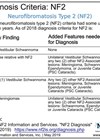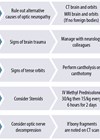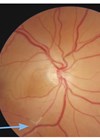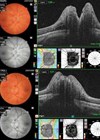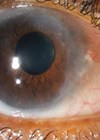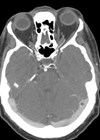Top Tips archive for 2021
Neurofibromatosis type 2 – diagnosis, features and MDT approach
NF2 is a genetic condition caused by mutation in a single gene (NF2 gene) on chromosome 22. The NF2 gene provides instructions to produce a protein called merlin, also known as schwannomin. This protein functions as a tumour suppressor, preventing...
Traumatic optic neuropathy
In neuro-ophthalmology we get asked a lot about management of patients who suffered significant trauma and presented with loss of vision secondary to presumed traumatic optic neuropathy (TON). TON happens usually in the context of significant craniofacial trauma. The incidence...
Time is vision in central retinal artery occlusion
Central retinal artery occlusion (CRAO) is a rare but devastating vascular episode that can have severe impact on vision. Treatment is very time-limited and needs to be initiated very quickly to salvage any vision. The majority of patients present to...
Idiopathic intracranial hypertension (IIH)
IIH is a medical condition where the intracranial pressure (ICP) is raised without an obvious cause. The cerebrospinal fluid (CSF) is produced in by the choroid plexus in the lateral ventricles and the roof of the third and fourth ventricles,...
Chemical injury
You are the on-call ophthalmologist. You receive a call from A&E regarding a 45-year-old man who sustained a chemical injury. He was mixing some cement, when a small amount entered his left eye. He was not wearing any protective goggles....
Cavernous sinus syndrome
Anatomically the cavernous sinus is a plexus of multiple veins that are connected and within this plexus there are several important vascular and neurological structures. These include cranial nerves III, IV, V1 (and sometimes V2), VI as well as the...


